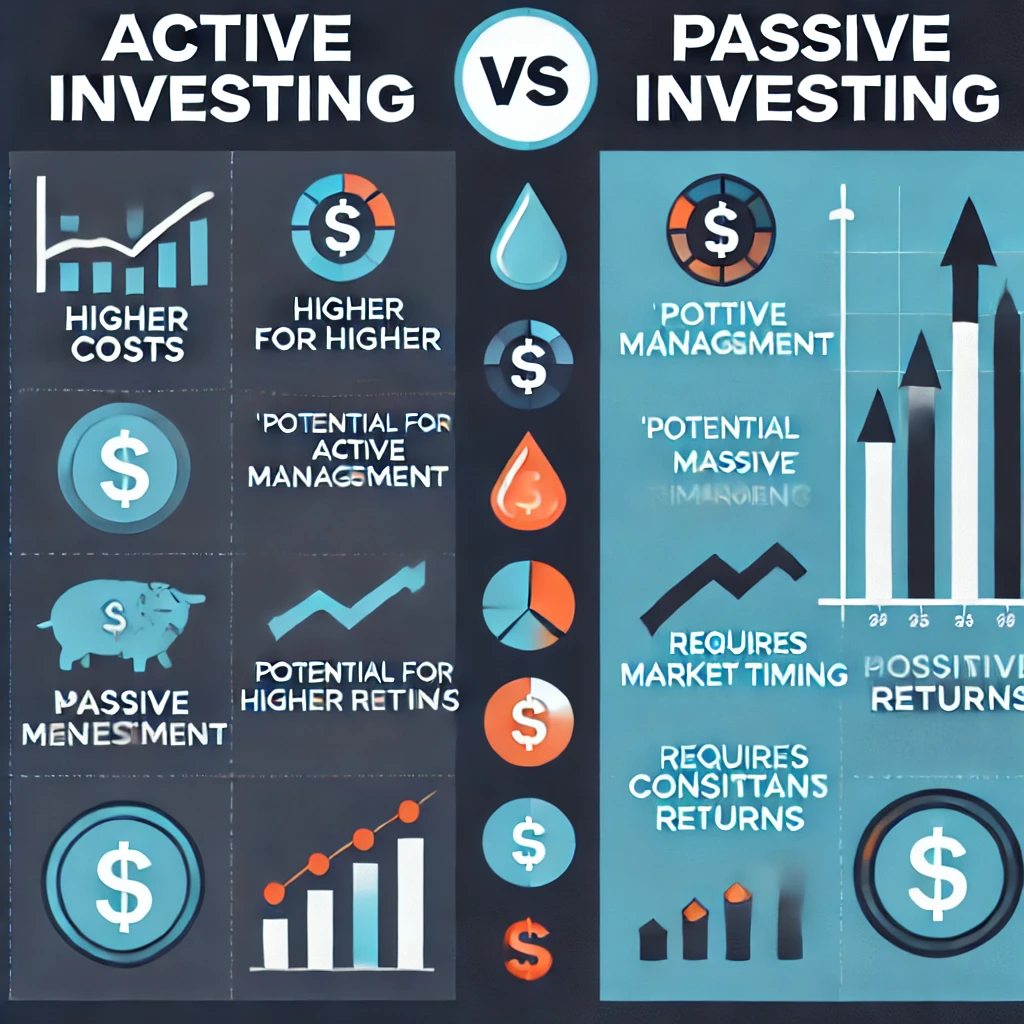Setting financial goals is a vital first step in managing your finances effectively, but turning those goals into reality is where the power of investing comes in. Whether you’re saving for a house, planning for retirement, or hoping to grow wealth, investing offers a path to meet those objectives. By aligning your investments with your personal financial goals, you can build a strategic plan that leverages the power of compound growth, risk management, and disciplined saving. In this article, we’ll explore how you can set, refine, and achieve your financial goals through investing.
Understanding Your Financial Goals: The Foundation of Successful Investing
Before diving into the world of stocks, bonds, or real estate, it’s crucial to have a clear vision of your financial goals. These are not merely aspirations—they are specific, measurable, and time-bound targets that will shape your financial life. For many, the challenge lies in defining these goals clearly.
Short-Term vs. Long-Term Financial Goals
Financial goals can typically be divided into short-term (under five years) and long-term (more than five years) objectives. Short-term goals might include saving for a vacation, paying off debt, or creating an emergency fund. Long-term goals often involve planning for retirement, buying a home, or funding your children’s education. The nature of the goal will heavily influence your investment strategy.
SMART Goals for Financial Success
Using the SMART framework (Specific, Measurable, Achievable, Relevant, and Time-bound) can help create realistic and attainable financial goals. For example, instead of saying, “I want to save for retirement,” you could say, “I want to save $500,000 for retirement in the next 20 years by contributing $500 monthly to an investment account with an average 7% annual return.”
Defining the Purpose of Your Investments
The most effective investment strategies are tailored to meet specific purposes. Are you looking to generate steady income, preserve capital, or grow wealth over the long term? Defining the purpose behind your investments helps you choose the right asset classes and portfolio mix. Knowing the ‘why’ behind your investments is key to setting realistic expectations for returns and risk tolerance.
The Importance of Risk Tolerance in Investing
Investing is not without risks, and understanding your personal risk tolerance is essential in choosing the right investment strategy. Your risk tolerance is your emotional and financial capacity to withstand losses in the market without panicking or abandoning your investment plan.
How to Assess Your Risk Tolerance
A risk assessment involves considering factors such as your age, income, financial responsibilities, and investment horizon. Younger investors with long-term goals might afford more risk (like investing in stocks), while someone approaching retirement may prefer a more conservative approach (like bonds or dividend-paying stocks).
Balancing Risk and Reward
The trade-off between risk and reward is central to investing. High-risk investments such as stocks or cryptocurrencies have the potential for higher returns but come with increased volatility. Conversely, low-risk assets like government bonds provide stability but often deliver lower returns. Striking the right balance between risk and reward, in line with your financial goals, is a fundamental part of setting a solid investment strategy.
Creating an Investment Strategy Tailored to Your Goals
Your investment strategy is essentially your roadmap for achieving financial goals. A well-structured strategy considers factors like risk tolerance, time horizon, and your unique financial situation.
Diversification: A Key to Managing Risk
One of the most important principles of investing is diversification—spreading your investments across different asset classes (stocks, bonds, real estate, etc.) to reduce risk. For example, if the stock market underperforms, your bond or real estate investments may cushion the loss. Diversification not only protects against large swings in your portfolio but also provides the opportunity for growth through various economic cycles.
Asset Allocation: Tailoring Investments to Your Goals
Asset allocation involves dividing your portfolio among different investment categories—usually stocks, bonds, and cash equivalents—based on your financial goals, risk tolerance, and time horizon. Generally, younger investors might hold a larger proportion of stocks to take advantage of potential growth, while older investors might shift to bonds or income-generating assets to preserve wealth.
Rebalancing Your Portfolio
Over time, market movements can cause your portfolio’s allocation to drift from your target. Rebalancing involves adjusting your portfolio periodically to bring it back to its original allocation. For example, if your stocks have grown significantly, they may represent a larger portion of your portfolio than intended, increasing your risk exposure. Rebalancing ensures that your portfolio stays aligned with your risk tolerance and financial goals.
The Power of Compound Interest in Achieving Long-Term Goals
One of the most compelling reasons to invest is to benefit from compound interest, which is essentially “earning interest on interest.” The longer your investments grow, the more powerful the compounding effect becomes.
How Compound Interest Works
Let’s assume you invest $10,000 at a 7% annual return. In the first year, you earn $700 in interest. In the second year, you’re not just earning interest on your initial $10,000 but also on the $700 you earned in the first year, resulting in even more interest. Over time, this compounding can lead to exponential growth in your investment portfolio.
Starting Early: The Key to Maximizing Compound Growth
The earlier you start investing, the more time your investments have to grow. Even small amounts invested regularly can snowball into significant sums over the years. For example, someone who invests $200 monthly starting at age 25 will likely end up with more money than someone who invests $400 monthly starting at age 35, thanks to the power of compounding.
Setting Milestones and Tracking Progress
Setting and achieving financial goals through investing is not a “set it and forget it” process. Regularly tracking your progress ensures you’re on the right path and allows you to make adjustments as necessary.
Setting Milestones for Each Financial Goal
Breaking down large goals into smaller, manageable milestones can make the process less overwhelming and more achievable. For instance, if your goal is to save $100,000 for a down payment on a home in 10 years, you can set annual or quarterly savings targets to keep yourself motivated and accountable.
Using Financial Tools and Apps to Track Investments
Today’s digital age offers a variety of tools that make it easier to track and manage your investments. Apps like Mint, Personal Capital, or even Excel spreadsheets can help you monitor your investments, budget, and overall financial health. Tracking your investments and contributions not only gives you a sense of control but also allows you to celebrate small wins along the way.
Maximizing Tax Efficiency in Your Investments
Taxes can significantly erode your investment returns if not managed properly. Being strategic about taxes can help maximize your wealth-building potential.
Tax-Advantaged Accounts
Take advantage of tax-efficient investment accounts such as IRAs, 401(k)s, or Roth IRAs, where your contributions can grow tax-free or tax-deferred. These accounts not only save you money on taxes but also enhance the long-term growth potential of your investments.
Tax-Loss Harvesting
Tax-loss harvesting involves selling losing investments to offset the gains from profitable ones, thereby reducing your taxable income. This strategy can be particularly effective in taxable brokerage accounts and helps manage the tax impact of your investment portfolio.
You can also read; How to Evaluate Risk vs. Reward in Your Investments
The Importance of Consistency in Achieving Financial Goals
Consistency is one of the most critical factors in reaching your financial goals. Whether it’s making regular contributions to your investment account or rebalancing your portfolio annually, staying disciplined pays off.
Dollar-Cost Averaging
Dollar-cost averaging involves investing a fixed amount of money at regular intervals, regardless of market conditions. This strategy helps smooth out the highs and lows of the market, reducing the emotional impact of volatility. Over time, dollar-cost averaging can lead to lower average purchase costs and higher overall returns.
Avoiding Emotional Investing
It’s easy to make impulsive decisions during market highs and lows. However, successful investing requires a long-term perspective and the discipline to stick to your strategy even in volatile markets. Emotional investing often leads to buying high and selling low, which can significantly hinder your financial progress.




